HOW TO TRUCK: How To Tow a Trailer

Pickup trucks are built to pull trailers, but there’s quite a bit that you need to know before you go hooking up to one. For Part 1 of our new How to Truck series, we’ve assembled a list of the basic instructions that you’ll need to know before you set off with something in tow.
Step 1: Know Your Numbers
The first step in towing a trailer is to know the numbers and rating associated with your vehicle. Finding your specific towing numbers should be done at the dealership when you buy your vehicle, but this information is also available in your Owner’s Manual and online.
You’ll need to find out your tow rating, gross vehicle weight rating (GVWR), gross combined weight rating (GCWR), gross axle rating and vehicle curb weight.
Once you know your tow rating, it’s important to consider all of the actual weight you are putting on your truck. When calculating your tow rating, manufacturers factor in two 150 pound occupants in the cab but they do not include cargo, whether it be in the cab or bed. Make sure to include every bit of weight being added to your truck when you calculate your gross vehicle weight.
To make sure your vehicle isn’t overloaded, you must make sure you aren’t exceeding the GVWR. Add together the gross vehicle weight (the entire weight of your truck, cargo and passengers) and the tongue weight of the trailer, which is usually 9 to 15 percent of the gross trailer weight. If those numbers add up to less than your GVWR, you’re ready to go.
For combined weight rating, add together the gross vehicle weight and gross trailer weight, being sure to include all passengers and cargo. If those add up to less than the GCWR, you’re good.
In the case of our properly equipped 2016 Tundra, we have a GVWR of 7,100 lbs., a maximum towing capacity of 10,000 lbs., a GCWR of 16,000 lbs. and a curb weight of 5,840 lbs.
Step 2: Hitch It Up
Finding the proper hitch depends on your vehicle and trailer. You’ll need to know what size the hitch receiver is on your vehicle and you’ll need to know the size of ball you need. In our case, we have a two-inch hitch receiver, which is what you’ll find on nearly every half-ton pickup truck, and we need a two-inch ball for our car carrier. Once you have your hitch, fit it into the receiver and make sure to put the king pin in place to hold it.
When it comes time to actually hooking up, there are many things to consider. First, it’s always best to have a second set of eyes spotting you from behind. Even though backup cameras make hooking up to a trailer fairly easy by yourself, having a helper is always best.
Back your vehicle into the trailer so that the hitch ball sits directly underneath the ball housing. Lower the trailer onto your hitch, until the jack begins to lift off the ground. The ball housing should slip right over the ball.
Now, close the lock on top of the ball housing. Most require you to squeeze a small lever and lower a larger handle, although these mechanisms can work in many different ways. There is one thing you can always do to check that you have a good connection: Feel underneath the hitch to make sure the collar took hold around the ball. Now throw a cotter pin or a lock into the ball housing lock to keep it closed.
Next, stow your jack foot. Most trailers allow you to fold the foot up to get it our of the way, though some you need to just keep cranking until the foot is fully lifted.
To hook up your safety chains, establish which side is which, then cross them when you hook them up to the truck. This makes sure that if the trailer did come off while in motion, the chains make a cradle to catch the tongue of the trailer.
Finally, the last thing you need to hook up are the lights. There are two main connectors on pickup trucks, four-pin and seven-pin. A four-pin connection is strictly for trailer lights, while the seven-pin accommodates trucks with trailer brakes. Get some dielectric grease, which can be bought from most big box stores and any auto parts store, for the contacts if the lights don’t seem to be working. Always make sure to check your lights!
Setup Your Trailer for Neutral Weight Balance
Weight balance on your trailer is very important, as it affects your tongue weight. You want your tongue weight to be 9 to 15 percent of the trailer weight, because a lot of tongue weight will pull your rear suspension down, causing your nose to lift. On the flip side, too little tongue weight will have the trailer pulling up on the rear of your truck and can also lead to trailer sway.
As a general rule, you can check yourself quite easily, you want your truck and trailer to both be sitting nice and flat when you’re all done hooking up.
So if you have too much tongue weight, shift the load to the back of the trailer; while if you have too little then move it forward.
How do you check for this? Drive your truck. The steering shouldn’t feel lighter than usual, and the trailer should not want to start swaying constantly.
If you’re pushing the limits of your truck, the best bet is to get an equalizing hitch. There is no definitive answer, but if you’re pushing past the 50 percent mark of your vehicle’s tow rating, you might want to look into an equalizer. It helps to keep weight distribution even over the trailer wheels and the truck’s wheels.
Step 3: Do a Circle Check
You’re just about ready to go, but there is one last step and it’s one of the most important: Do a circle check. Walk around your entire rig and just go over everything one last time. Are the lights good? Are the tires inflated properly? Is the hitch on right? Is your cargo strapped properly? For commercial truck drivers, doing a circle check is the law, so it’s a great habit to get into every time you’re pulling a trailer.
Step 4: How To Drive With a Trailer
Finally, you’re on the road with a properly connected and balance trailer, but how should you adjust your driving to be safe with a load on the back?
Proper mirrors and mirrors adjustment are an important part of towing. For half-ton pickup trucks, tow mirrors are available from the factory, while aftermarket tow mirrors are available that can attach on to any set of regular mirrors.
No matter what mirrors you are using, you need to be able to see a car that is directly behind your trailer. In our case with the car carrier, we set the mirrors quite a ways out to make sure our vision behind the trailer is clear.
If you’re towing a trailer that totally blocks your rearward field of vision, such as a travel trailer or enclosed toy hauler, proper tow mirrors are required by law.
Step 5: Take Your Time
A good first rule for any trailer novice is to take your time. Don’t ever be in a rush. Take as much time as you need to execute safe maneuvers. It’s when drivers become flustered and stressed out that accidents happen.
Step 6: Towing Dynamics, Cornering and Braking
Cornering can be tricky with a trailer and the key to doing it safely is to take every corner nice and wide. Use every bit of road that is available, even if you don’t need it. That way, you know you’re safe. During your turn, keep on eye on the inside wheels of the trailer to make sure you’re not going to clip a curb or telephone pole.
Braking is also another important thing to consider. Thanks to the weight of the trailer, you will need more time to stop, so never tailgate anyone. It’s a good idea to leave at least three to four car lengths in front, but the weight of the trailer will dictate how much space you need. Remember, you can never leave too much space.
Step 7: Set Up Your Trailer Brake Controller
If you have a trailer with brakes, it’s important to setup your trailer brake controller. Our 2016 Tundra has an available Integrated Trailer Brake Controller, but you can get an aftermarket controller for your vehicle if one isn’t available from the factory.
To set it up, get up to about 20 mph on an empty road and slowly begin squeezing the manually operated brakes. The second you see the wheels lockup, note the brake gain. Then, adjust your gain to 0.5 lower than that setting.
As you drive, you want to feel the brakes working, but you never want the trailer brakes to lockup.
Step 8: Double-Check Your Load
About 20 minutes after taking off, it’s good practice to stop once more and cinch up any tie downs you may have on your trailer as the rattling motion of the road can loosen stuff up.
And that’s how you tow a trailer.

Stephen covers all of the day-to-day events of the industry as the News Editor at AutoGuide, along with being the AG truck expert. His truck knowledge comes from working long days on the woodlot with pickups and driving straight trucks professionally. When not at his desk, Steve can be found playing his bass or riding his snowmobile or Sea-Doo. Find Stephen on <A title="@Selmer07 on Twitter" href="http://www.twitter.com/selmer07">Twitter</A> and <A title="Stephen on Google+" href="http://plus.google.com/117833131531784822251?rel=author">Google+</A>
More by Stephen Elmer







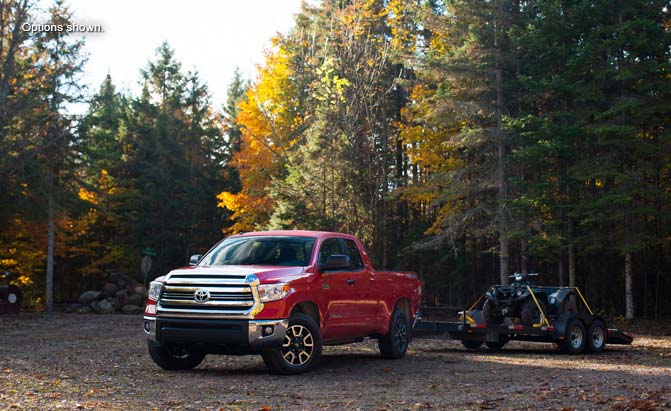

















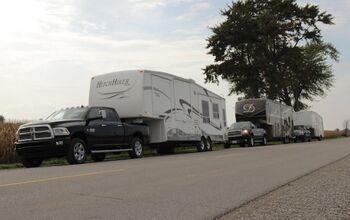
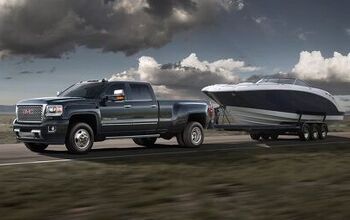




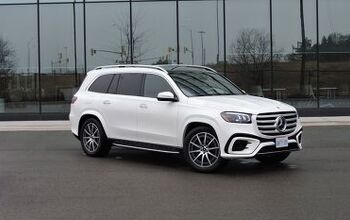




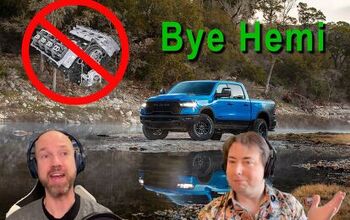
Comments
Join the conversation
For Step 1: Know Your Numbers, here is an alternate resource that calculates realistic towing capacity. http://RVtowCheck.com
This article is astoundingly insufficient on discussion about cargo capacity vs. tongue weight. The two passenger rule you quote regarding towing capacity is easily misunderstood. By federal regulation it is not applicable to cargo capacity. Passengers take away from the cargo capacity. For a example a half ton truck may only have 1200 pounds total cargo capacity and by the time you put two passengers in the truck, stuff in the back, the dog, and a trailer with several hundred pounds of tongue weight, you have severely overloaded the truck regardless of it "towing capacity". The limiting factor is highly likely to be cargo capacity. Most manufacturers' towing capacities now are marketing jive and actually are irrelevant when you consider their limited cargo capacity. In addition, you may also be exceeding the capacity of your receiver hitch on the truck. For example, a half ton truck's class IV receiver is usually more anemic than the big towing capacity the manufacturer's claim will handle from a tongue weight perspective. 15% tongue weight on a 10k pound trailer is 1500#! You have immediately severely exceeded the receiver capacity and the cargo capacity. This article leaves out way too much information for safe towing and the two person rule in the towing capacity is actually quite irrelevant because it is the cargo capacity and receiver capacity (tongue weight) that are the limiting factors. A vehicle that has its suspension overloaded is quite dangerous from a vehicle dynamics viewpoint. "Towing capacity" gets way too much marketing focus and it is a shame for AutoGuide to become an extension of the manufacturers smoke and mirrors (either intentionally or by being naive). Bottomline this article only tells part of the story and is a disservice to the uninformed reader.